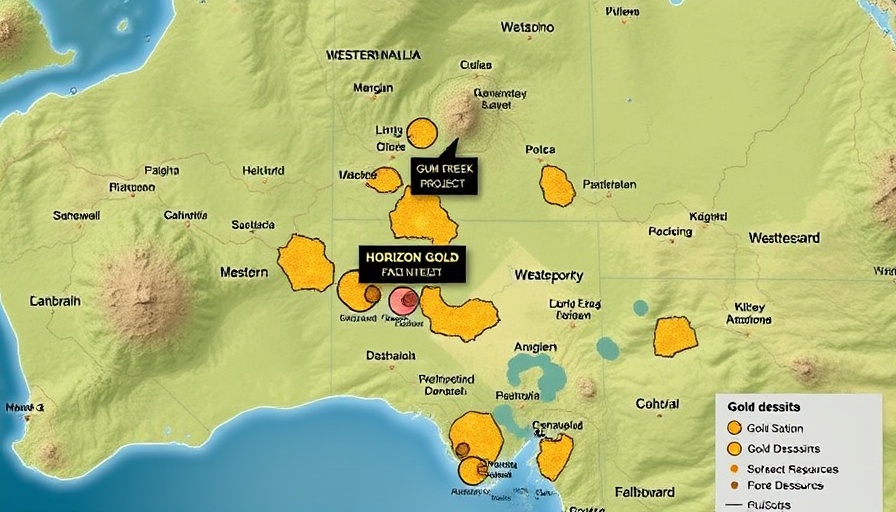
Unlocking Hidden Treasures: The Revival of Historic Mining Regions
Amid soaring gold prices, junior miners are turning back the clock and exploring historic mining regions across Australia, such as Gascoyne, Forrestania, and Leonora. These places, once thriving with mining operations, are experiencing a renaissance thanks to new technologies and a perceptible shift in market dynamics. As old mines lay dormant, savvy explorers are seeing golden opportunities in the rich, yet overlooked, geological resources that these regions have to offer.
Why Old Mining Grounds Are Attractive
The age-old adage holds true: finding a new mine near an existing one often proves successful. Australia’s rugged outback is home to remnants of erstwhile mining operations that faltered due to various factors, including fluctuating metal prices and resource depletion. As the gold market surges, now oscillating around $5,500 an ounce, conditions are ripe for a resurgence driven by junior miners who are breathing new life into abandoned or previously unprofitable sites.
A Fast-Track to Production: Infrastructure Advantages
Establishing new mining operations from scratch can be daunting, requiring substantial investment, time, and navigating complex regulatory frameworks. However, by focusing on former production facilities equipped with existing infrastructure, firms like Dreadnought Resources (ASX:DRE) and Taruga Minerals (ASX:TAR) can expedite the path towards resuming operations. Notably, Dreadnought's Mangaroon project has yielded impressive gold assays of up to 20.5 grams per tonne (g/t), supporting the case for further exploration of this historic site.
Pushing Boundaries: Untapped Potential in Gascoyne
The Gascoyne region has been identified as particularly promising due to its older mining legacies. Taruga Minerals is making strides by acquiring contiguous permits, which are believed to host high-grade historical workings. Interestingly, the perception that the region only houses small deposits may stem more from minimal exploration investment than geological limitations, opening up possibilities for further gold and silver discoveries. Areas like Thowagee, which boast a history of polymetallic mining, could reveal substantial mineral wealth through modern exploration techniques.
Future Implications for Sustainable Mining Practices
As these junior miners revitalize historic mining regions, their approach aligns with the increasing demand for sustainable practices in the industry. The integration of innovative technologies not only improves extraction efficiency but also minimizes environmental impact. This resurgence in mining activities may, in turn, bolster local economies while adhering to eco-friendly standards.
Combining Tradition and Technology
With the rise of data-driven exploration and advanced drilling technologies, the next wave of junior miners is positioned to navigate the challenges that once plagued their predecessors. These techniques could dramatically enhance our understanding of mineral deposits and ensure that we cultivate a future rooted in responsible resource management.
The revival of historic mining regions hence serves a dual purpose. Not only does it seek to tap into underground riches, but it also fosters a narrative around sustainability and innovation, critical for future construction and building industries striving to lessen their ecological footprint.
Explore More: The Future of Mining
As junior miners continue their quest for precious metals, their ventures into historic sites illustrate the potential for revitalizing regions once deemed spent. For contractors and builders committed to sustainable construction practices, staying abreast of these developments can yield insights that drive their operations forward into an era defined by responsible growth and innovative technologies. This is a critical moment for industry players to consider how evolving mining practices may provide access to sustainable raw materials necessary for modern building projects. With the right approach, the revival of historic mining can pave the way for a greener future.
 Add Row
Add Row  Add
Add 




Write A Comment